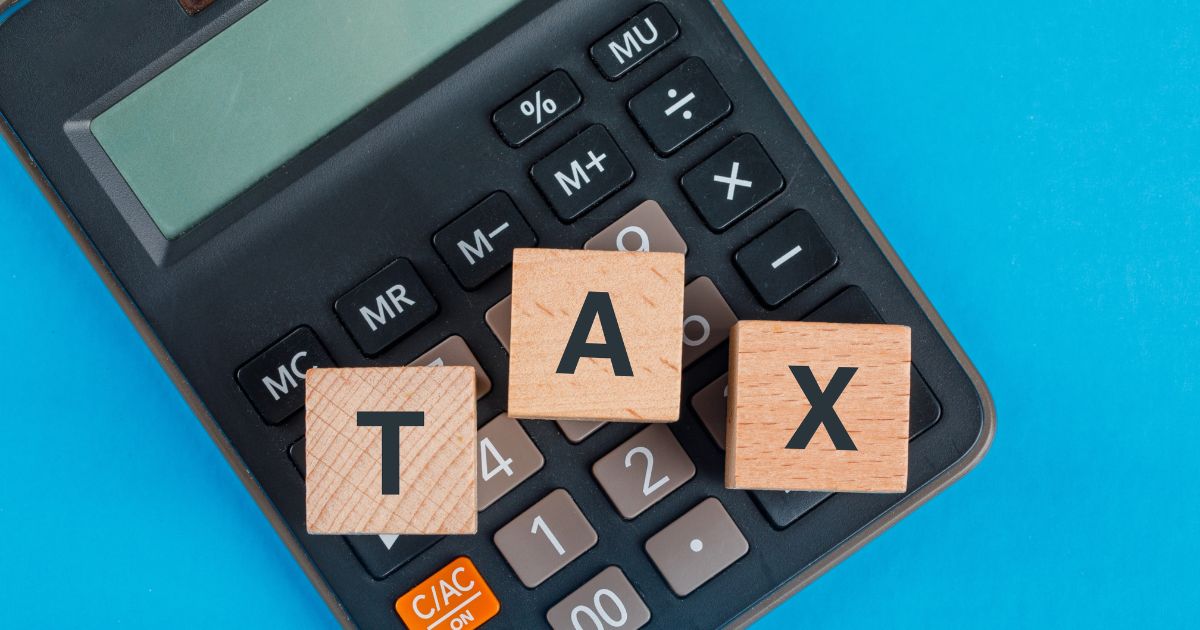Introduction
Partnership firms have long been a preferred business structure in India due to their operational flexibility, ease of formation, and shared decision-making. However, when it comes to taxation, partnership firms are treated as separate assessable entities under the Income Tax Act, 1961, and are subject to a unique set of provisions distinct from those applicable to individuals or companies.
Understanding the tax implications for both the firm and its partners is crucial for effective compliance, tax planning, and financial reporting. From the flat 30% tax rate on firm profits to the nuanced conditions for claiming deductions on partner remuneration and interest on capital, the tax regime governing partnership firms is both structured and intricate.
Recent legislative updates such as the introduction of Section 194T (TDS on payments to partners) and the detailed capital gains computation under Sections 9B and 45(4) upon reconstitution or dissolution have further enhanced the complexity of taxation for firms and their partners.

This article provides a comprehensive guide to the taxation of partnership firms, covering everything from the basics of firm-level taxation to the treatment of partner remuneration, capital contributions, and taxability upon retirement or reconstitution. Through simplified explanations, tabular summaries, and practical illustrations, this article aims to equip practitioners, partners, and tax professionals with a clear and updated understanding of the subject.
Taxation of Partnership Firms
Under the Income Tax Act 1961 a partnership firm is liable to pay tax at flat 30% on their profits. A surcharge of 12% will be applicable when the taxable income of the firm is more than Rs. 1 Crore. The health and education cess of 4% is also applicable to firms.
Remuneration paid to Partner under the Income Tax Act
Legal Framework
Remuneration to partners is governed by Section 40(b) of the Income Tax Act, 1961. This section specifies the conditions under which remuneration (salary, bonus, commission, etc.) paid to partners is allowable as a deduction while computing the income of a partnership firm under the head "Profits and Gains of Business or Profession."
Key Conditions for Allowability of Remuneration
1. Only to the Working Partner
Remuneration must be paid only to working partners, i.e., partners who are actively engaged in the business of the firm.
2. Authorised by Partnership Deed
The payment of remuneration should be authorized by the partnership deed. The deed must either specify the amount or clearly lay down the manner of computation of such remuneration.
3. Should Not Be for a Period Prior to the Date of Deed
Remuneration will not be allowed for any period prior to the date of the partnership deed, even if the deed is later backdated.
Maximum Permissible Remuneration [Explanation 3 to Section 40(b)]
The Income Tax Act prescribes a ceiling limit on the amount of allowable remuneration, which depends on the book profit of the firm:
|
*Book Profit |
Maximum Deductible Remuneration |
|
On the first Rs 3,00,000 |
Rs. 1,50,000 or 90% of book profit, whichever is higher |
|
On the balance of book profit |
60% of the book profit |
*Book profit means the net profit as per profit & loss account, increased by partner's remuneration if already debited.
Interest on capital paid to Partner under the Income Tax Act
Legal Framework
Interest paid to partner to partners is governed by Section 40(b)(iv) of the Income Tax Act, 1961. This section restricts the amount of interest that a firm can claim as deduction on capital paid to partners.
Key Conditions
The interest on capital must be authorized by the partnership deed and rate of interest should be specified in the deed. If the deed is silent or does not authorize interest, no deduction is allowed.
Maximum limit
The maximum allowable interest is 12% per annum (simple interest). Any amount paid more than 12% is disallowed as per Section 40(b).
Taxability of Remuneration, Interest, Salary, Bonus and Share of profit in the hands of Partner
Remuneration, salary, bonus, commission or interest received by a partner from a partnership firm is taxable under the head "Profits and Gains of Business or Profession" (PGBP). However, share of profit received by a partner from a firm is exempt in the hands of Partner
Section 194T: TDS on Payment by Partnership Firm to Partners
Section 194T came into effect from 1st April 2025. It deals with TDS deduction of certain payments made to a partner by a firm. TDS at the rate 10% needs to be deducted for salary, bonus, commission, remuneration, interest on capital and interest on loan. No TDS needs to be deducted when the payment does not exceed Rs 20,000 during the financial year.
Taxability of Capital Introduced by Partner into Firm
Capital Introduced in Cash
When a partner contributes cash to the firm, then no taxability arises in the hands of the partner and amount is credited to the partner's capital account in the books of the firm. The firm is not required to deduct TDS or treat it as income. It is treated as a capital transaction, not income.
Capital Introduced in Kind (e.g. Asset like Land, Machinery)
If a partner contributes a capital asset (e.g. land or building) instead of cash then as per section 45(3) of the Income Tax Act, 1961 it is treated as transfer of capital assets in the hands of partner and capital gain tax is attracted in the hands of partner. The sale consideration will be the amount recorded in the books of the firm as the value of such an asset. The firms record the asset at the value agreed upon, and there is no tax implication in the hands of the firm at the time of capital introduction.
Taxability at the time of Reconstitution or dissolution of firm [Section 45(4) & 9B]
Section 9B
If a Partner receives any capital asset or SIT (stock in trade) or both from the firm in connection with the dissolution or reconstitution of firm then the firm shall be deemed to have transferred such capital assets to partner in the year in which such capital assets are received by the partner and firm is required to pay tax under the head PGBP or Capital gain as the case may be.
What is the full value of consideration (FVOC)?
FMV as on the date of receipt by partner shall be treated as FVOC for the purpose of capital gain and PGBP.
Reconstitution
- One or more of its partners ceases to be partner; or
- One or more new partner is admitted in such circumstances that one or more of the existing partners, continue as partner or partners after the change; or
- All the partners continue with a change in their respective PSR or in the PSR of some of them
Section 45(4)
If a Partner receives any money or capital asset or both from a firm in connection with the reconstitution then any profit or gains arising from such receipts shall be chargeable to tax as income of Firm under the head "Capital gains" in the year in which assets received by partner
How to calculate?
|
Particulars |
Amount |
|
Value of money at the date of receipts (B) |
xxxx |
|
Add: FMV of Capital assets at the date of receipts (C) |
xxxx |
|
Less: Partner Capital Account balance at the time of reconstitution (D) |
(xxxx) |
|
Capital Gain [A]= [B+C-D] |
xxxx |
Important points
- If the value of above capital gain (A) is negative, then its value shall be considered as zero
- Balance in the capital account of the partner in books of firm is to be calculated without considering the increase in the capital account due to revaluation of capital asset or due to self-generated goodwill or any other self-generated asset
- The above capital gain shall be attributable to remaining capital assets as per Rule 8AB
- The above capital gain shall be deemed to be STCG if it is attributable to following assets
- STCA at the time of taxation u/s 45(4)
- Capital asset part of block of asset (Depreciable asset)
- Self-Generated asset and Self-Generated goodwill
- In other case, above Capital Gain shall be deemed to be LTCG
Computation of Capital Gain at the time of transfer of remaining Assets
Capital Gain charged u/s 45(4) is attributable to remaining assets as per Rule 8AB then at the time of transfer of such assets shall be reduced while calculating capital gain
Rule 8AB: Attributable of Capital Gain referred u/s 45(4) to the remaining capital assets of Firm
|
S.No |
Capital Gain charged u/s 45(4) relate to |
Attributable Rule |
|
1. |
Capital Assets received by partner |
No attribution |
|
2. |
Revaluation of any capital assets or valuation of self-generated goodwill or any other self-generated assets of firm (other than 1 above) |
CG* Increase in Value of such assets Total increase in value of all assets due to revaluation |
|
3. |
Do not relate to any the above categories |
No attribution |
Let's understand both provisions above with the help of example
Mr. Prem is a partner in two firms, X & CO., Mumbai and Y & Co., Delhi. X & Co. has four partners with equal PSR. Mr. Prem resigned from X & Co. on 01.05.2024. On that date, the capital balance of each of the partners stood at Rs 32 lakhs. To settle the dues of Mr. Prem, the firm revalue its land for the first time since purchase. The valuer also valued self-generated goodwill at Rs 70 lakh. The firm has the following assets whose details are as follows
|
S.No |
Assets |
Date of Purchase |
Cost (Book Value) |
FMV as on 01.05.2024 |
|
1. |
Land at Pune |
21.01.2013 |
Rs 15 lakh |
Rs 50 lakh |
|
2. |
Land at Nagpur |
18.04.2015 |
Rs 25.4 lakh |
Rs 45 lakh |
|
3. |
Land at Mumbai |
14.05.2013 |
Rs 88 lakh |
Rs 250 lakh |
|
4. |
Self-generated Goodwill |
- |
- |
Rs 70 lakh |
In May 2024, X & Co gave Nagpur Land and Rs 15 lakh to Mr. Prem to settle his capital balance. Calculate the capital gain in the hands of firm.
Applicability of Section 9B
|
Particulars |
Rs |
|
Full Value of consideration (FMV on the date of transfer) |
45,00,000 |
|
Less: Indexed cost of acquisition 25,40,000 * 363 (24-25) 254 (15-16) |
(36,30,000) |
|
Capital Gain as per section 9B [A] |
8,70,000 |
|
Tax Liability [A*20.8% (20%+4 % cess) ] |
1,74,000 |
The CBDT guidelines also specify accounting treatment in the books of Firm on the transfer of assets to partner. As per accounts, profit before tax on transfer of capital assets shall be Rs 19,60,000 [45,00,000 (FMV) -2540000 (B.V)]
Profit after tax as per account is Rs 17,86,000 (1960000-174000)
- Mr. Prem share of profit (1786000/4) is Rs 4,46,500
- Mr. Prem capital after adjusting profit [320000+446500] is Rs 36,46,500
Applicability of Section 45(4)
Since in the present case Mr. Prem retired from the firm, it is treated as reconstitution of Firm, so section 45(4) also applies in addition to Section 9B.
|
Particulars |
Rs |
|
Value of money at the date of receipts (B) |
15,00,000 |
|
Add: FMV of Capital assets at the date of receipts (C) |
45,00,000 |
|
Less: Partner Capital Account balance at the time of reconstitution (D) |
(36,46,500) |
|
Capital Gain as per section 45(4) |
23,53,500 |
Attribution of Capital Gain u/s 45(4) to remaining capital assets of Firm as per Rule 8AB
|
Assets |
Cost (Book value) |
Revalued (FMV) |
Increase |
Attribution |
|
Land at Pune |
15,00,000 |
50,00,000 |
35,00,000 |
3,08,511 (2353500*35L/267L) |
|
Land at Mumbai |
88,00,000 |
2,50,00,000 |
1,62,00,000 |
14,27,966 (23,53,500*162L/267L) |
|
Self-Generated Goodwill |
Nil |
70,00,000 |
70,00,000 |
6,17,023 (23,53,500*70L/267L) |
|
Total |
2,67,00,000 |
|||
- Capital gain of Rs 17,36,477 attributed towards Land at Pune and Mumbai is treated as LTCG as such lands are long term capital assets at the time of taxation u/s 45(4) and accordingly tax liability will be Rs 3,61,187 (1736477*20.8%)
- Capital Gain of Rs 6,17,023 attributed towards self-generated goodwill shall be treated as STCG and tax liability will be calculated as per slab rate.
Conclusion
The taxation framework for partnership firms in India under the Income Tax Act, 1961 is both comprehensive and evolving. While the firm enjoys the status of a separate taxable entity, its tax treatment especially concerning remuneration, interest to partners, capital introduction, and reconstitution, demands meticulous planning and strict adherence to statutory provisions.
Key sections such as 40(b), 45(3), 9B, and 45(4) outline the conditions and limits under which deductions are allowed and gains are computed. The recent introduction of Section 194T, mandating TDS on certain payments to partners, marks a shift toward enhanced transparency and tax compliance.
Through this article, we have unpacked the practical and legal nuances of partnership taxation, including real-life illustrations, to equip stakeholders with clarity and actionable insights. Whether you're a tax practitioner, auditor, or business owner, a sound understanding of these rules is essential for effective financial planning, risk mitigation, and seamless tax compliance in partnership operations.
As the tax landscape continues to evolve, staying informed and proactive remains the cornerstone of efficient partnership management.







 CAclubindia
CAclubindia

